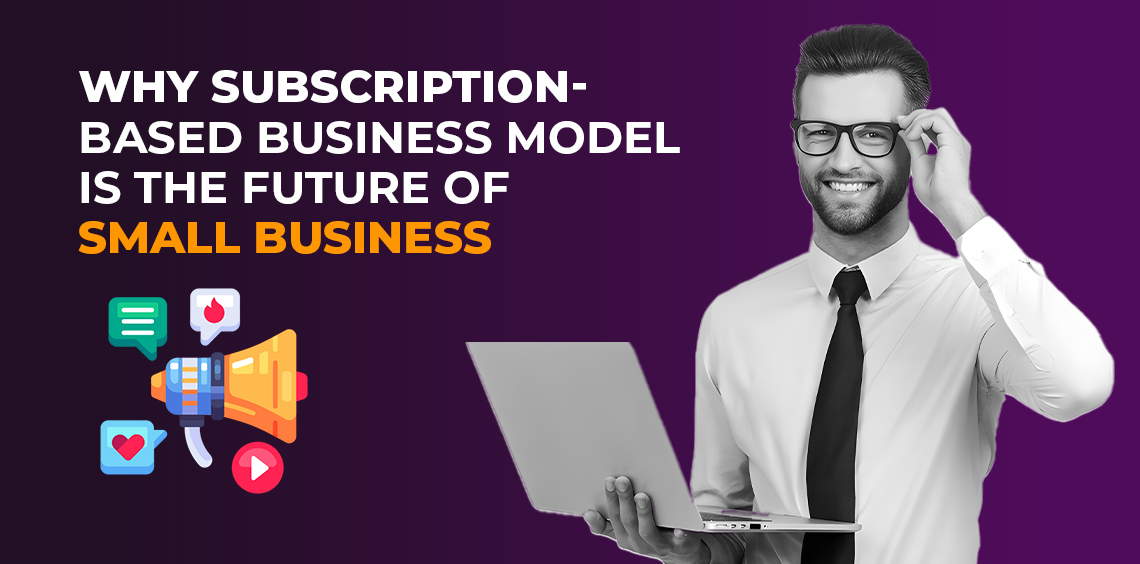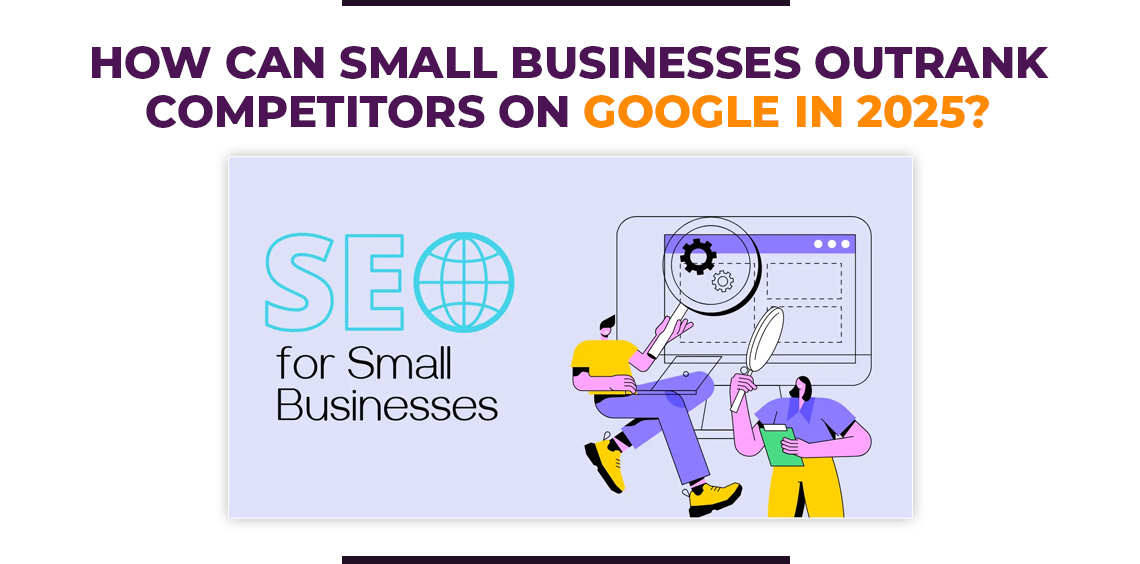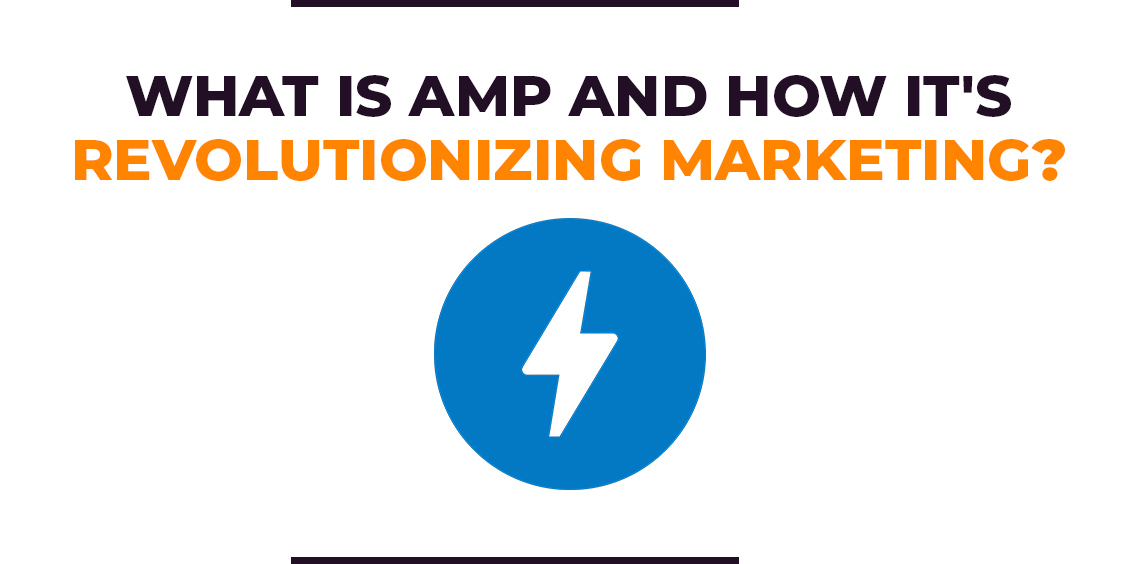Can a Subscription-Based Model Significantly Lower Marketing Costs?
Is your marketing budget out of control, and you are not getting a good return on investment? If you’re constantly chasing new customers and spending heavily on ads, you’re not alone. Many businesses face the challenge of high customer acquisition costs that can drain resources and impact profitability.
But what if there was a way to cut those costs and still grow your revenue?
Choose the subscription-based model. In contrast to conventional business models that depend on one-time purchases, subscriptions prioritize establishing enduring connections with clients. A survey by eMarketer reveals that 34% of Americans are likely to subscribe to more services in the next two years.
In addition to guaranteeing a consistent flow of income, this change also drastically lowers marketing costs.
How? By focusing on customer retention, utilizing data-driven insights, and promoting organic growth through referral systems.
Let us look at how this model transforms your marketing strategy and why it is a game changer for businesses.
Table of Contents
ToggleKey Takeaways: Subscription-Based Model
- Predictable Revenue: Subscription models offer consistent, predictable income, making financial planning more manageable for businesses.
- Enhanced Customer Retention: By focusing on customer satisfaction and loyalty, subscription services foster long-term relationships, reducing churn rates and increasing lifetime value.
- Cost-Effective Marketing: Subscription-based businesses benefit from lower marketing costs, as retaining existing customers is significantly less expensive than acquiring new ones.
- Data-Driven Insights: Access to customer data allows businesses to make informed decisions, personalize offerings, and develop targeted marketing strategies that resonate with their audience.
- Operational Efficiency: The subscription model encourages efficient inventory management and streamlined operations, reducing waste and optimizing resource allocation.
- Scalability: This model allows businesses to adapt and scale based on customer demand, further enhancing operational effectiveness.
Understanding Subscription Marketing
Subscription marketing revolves around consistently engaging both new and loyal customers through recurring services or products. It’s not just about making the sale but creating an ongoing relationship with your audience.
From monthly pet supplies to digital streaming platforms, businesses are utilizing their subscription models to build steady revenue streams. But what makes a subscription model succeed?
How do companies foster long-term customer loyalty?
The Power of Subscription-Based Models
Successful subscription models aren’t just about offering a product or service; they focus on delivering a seamless, personalized experience. Major players like Amazon, Netflix, and Microsoft illustrate this by refining their offerings to enhance customer satisfaction.
- Amazon integrates a wide range of services to create a one-stop-shop experience.
- Netflix excels with customized content recommendations and cutting-edge technology.
- Microsoft ensures smooth, accessible software experiences, backed by excellent support.
These companies use sophisticated data collection methods to track user behavior, preferences, and engagement. This data-driven approach helps them not only retain customers but also continuously improve their offerings.
What is a Subscription Business Model?
A subscription business model generates recurring revenue by offering products or services through weekly, monthly, or yearly payments. The monthly subscription is particularly popular, with two common types: evergreen plans that auto-renew until canceled and termed plans that require renewal after a set period.
What Drives the Success of the Subscription Model?
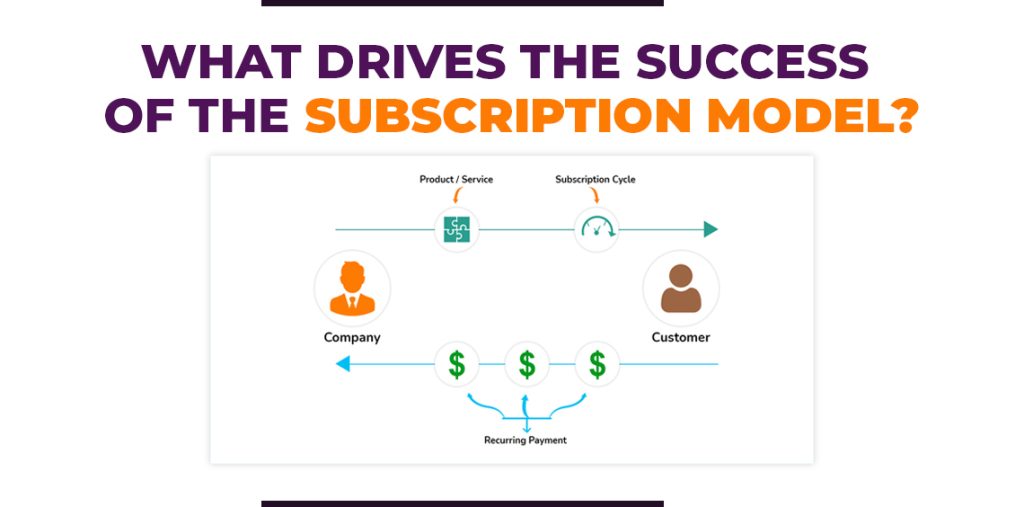
The subscription model’s success is rooted in the convenience and stability it offers to both businesses and consumers. According to Gartner, by 2023, 75% of businesses selling directly to consumers are expected to adopt this model. Over the past decade, it has revolutionized how companies operate, providing a predictable revenue stream and fostering long-term customer relationships.
For consumers, the appeal lies in the ease of automatic renewals, eliminating the need for repeated transactions. Technological advancements like subscription management platforms, automated billing systems, and secure payment options have made this model seamless and scalable.
Moreover, AI-driven insights are enhancing customer engagement by personalizing experiences and streamlining operations. This integration is projected to boost customer satisfaction, revenue, and cost efficiency by up to 25% by the end of 2023, making the subscription model increasingly indispensable for modern businesses.
The Rise of Subscription-Based Model Across Industries
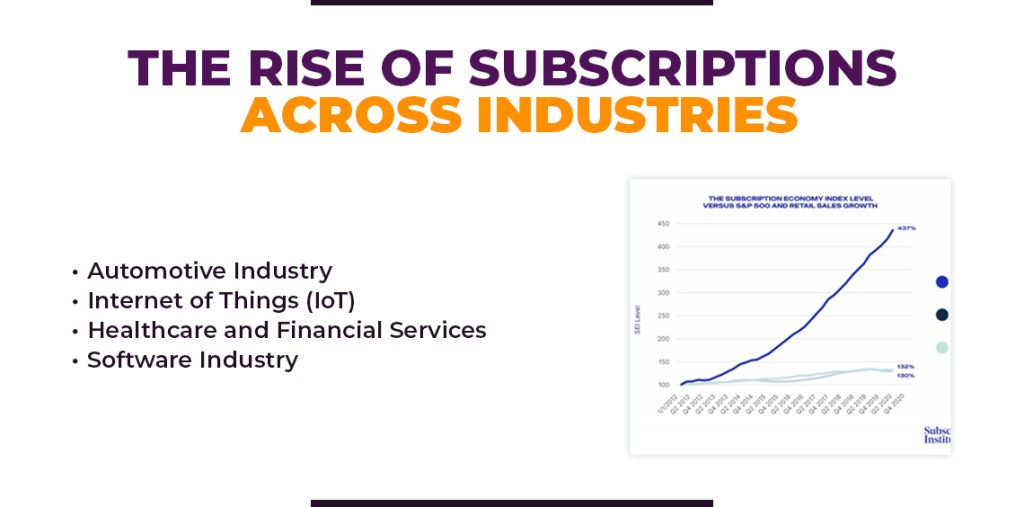
Subscription models are rapidly expanding beyond traditional sectors. Here’s how different industries are embracing this shift:
- Automotive Industry
The car industry is transitioning to a post-ownership era, with brands like Volvo predicting that by 2025, half of their sales will come from subscription services. This approach allows consumers to enjoy the benefits of ownership without the long-term commitment.
- Internet of Things (IoT)
IoT is driving subscription growth across multiple sectors, including smart homes, manufacturing, and logistics. Devices like Alexa, Fitbit, and Nest are just the tip of the iceberg. McKinsey forecasts that B2B IoT applications will dominate, generating nearly $5 trillion in revenue over the next five years.
- Healthcare and Financial Services
Healthcare is exploring subscription models for medicine, while financial services are creating “personal financial operating systems.” These systems offer tools for managing finances with proactive, personalized advice. Ernst & Young highlights the transformative potential of these models in simplifying and enhancing customer experiences.
- Software Industry
The software sector has been a pioneer in subscription models. By 2020, Gartner estimated that 80% of historical software vendors would adopt this model. Subscriptions in software ensure continuous updates, support, and enhanced user experiences, making them a preferred choice for both businesses and consumers.
Capitalizing on Subscription Success
To truly harness the power of subscription marketing, businesses must:
- Prioritize Customer Experience: Custom services to meet evolving customer needs.
- Utilize Data: Use customer insights to personalize offerings and enhance engagement.
- Expand Thoughtfully: Consider how subscription models can be integrated into your industry to offer value and convenience.
Subscription marketing isn’t just a trend; it’s a strategic approach reshaping industries. By focusing on long-term relationships and continually refining the customer experience, businesses can ensure sustained growth and loyalty.
Your Growth Journey Starts Here!
Explore our Standard Hosting plan and enjoy a dedicated account manager with powerful features to elevate your business. Check out our hosting packages today!
Why the Subscription-Based Model is the Future of Business
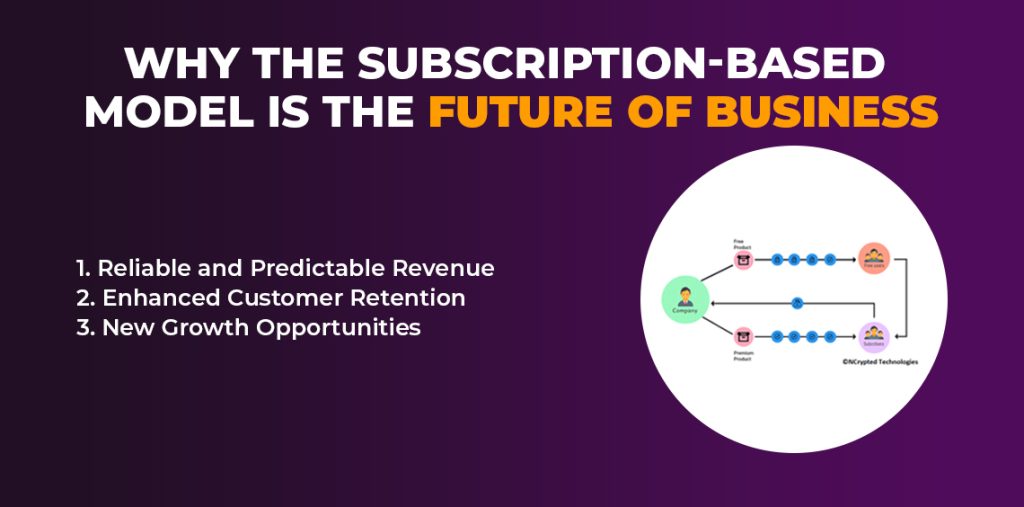
The subscription model is transforming industries by offering businesses a steady revenue stream, fostering long-term customer relationships, and enabling flexibility in operations. Here’s why this model is considered a game-changer:
1. Reliable and Predictable Revenue
With subscriptions, businesses gain a consistent and predictable income. Customers commit to regular payments, providing financial stability that simplifies budgeting, cash flow management, and future planning. This reliability allows companies to focus on growth and innovation without constantly worrying about fluctuating sales.
2. Enhanced Customer Retention
Subscriptions naturally build stronger connections with customers. Here’s how:
- Ease of Use: Subscriptions eliminate the hassle of repeated purchasing. Customers get what they need without lifting a finger.
- Cost-Effective: Subscriptions often cost less than buying individually, giving customers more value for their money.
- Loyalty Rewards: Many businesses sweeten the deal with exclusive perks like discounts or early access, encouraging customers to stick around.
3. New Growth Opportunities
The subscription model offers more than just steady income. It opens doors to:
- Deep Customer Insights: With ongoing access to customer data, businesses can better understand their audience, tailor their offerings, and refine marketing strategies.
- Easy Scaling: Subscriptions allow businesses to quickly scale up or down based on demand, avoiding waste and optimizing resources.
- Flexible Plans: Offering various subscription tiers caters to different customer needs and budgets, widening appeal and increasing market reach.
Subscription models aren’t just about recurring payments—they’re about building lasting relationships and providing continuous value.
By focusing on convenience, cost savings, and personalized experiences, businesses can stay ahead in a competitive market and ensure long-term success.
The Role of Revenue Predictability in the Future of Commerce
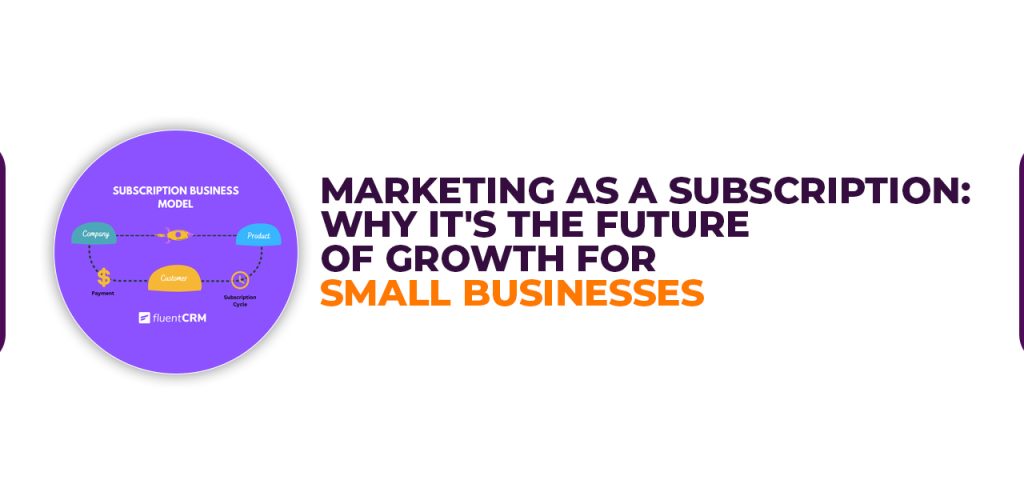
Predictable revenue is a cornerstone of the subscription-based model, driving its growing prominence in modern commerce. This financial consistency offers several advantages that not only strengthen a business’s foundation but also pave the way for sustained growth.
- Enhanced Customer Retention
Subscription models foster ongoing customer relationships, which naturally lead to more reliable revenue streams. With recurring fees, businesses can accurately forecast their income. This predictability allows companies to focus on nurturing loyalty, knowing that a stable base of subscribers contributes to long-term financial health.
- Improved Financial Planning
With a steady inflow of revenue, businesses can engage in more effective financial planning. Predictable income makes it easier to allocate resources, invest in new initiatives, and fund research and development. This foresight enables smarter decisions about growth strategies, marketing efforts and operational enhancements.
- Stability Amid Market Fluctuations
One of the biggest challenges in business is navigating economic uncertainties. The subscription model mitigates this risk by providing a continuous income stream, even during volatile market conditions. This stability not only helps businesses weather tough times but also instills confidence in stakeholders and investors.
Key Benefits of Predictable Revenue
| Benefit | Description |
| Customer Retention | Strengthens loyalty, ensuring consistent revenue flow from a dedicated customer base. |
| Financial Planning | Enables informed investment decisions, driving growth and innovation. |
| Stability | Shields businesses from market volatility, ensuring resilience and long-term sustainability. |
The Bigger Picture
In today’s fast-paced economy, predictability in revenue is more than just a comfort—it’s a strategic advantage. It empowers businesses to grow confidently, innovate continuously, and remain resilient against economic shifts.
As a result, the subscription-based model is not just a trend but a blueprint for the future of commerce, offering a balanced mix of stability and growth potential.
Why the Subscription Model is Better for Businesses Than Pay-Per-Product
The subscription-based model has revolutionized the way businesses operate, offering clear advantages over the traditional pay-per-product approach. Here’s why it’s a game-changer:
- Steady Revenue Stream
One of the biggest wins for businesses using a subscription model is the consistent, predictable income it provides. Unlike the uncertainty of the pay-per-product model—where revenue can spike one month and plummet the next—subscriptions bring in a steady flow of cash. This makes it easier for businesses to budget, forecast, and plan for growth.
- Stronger Customer Relationships
Subscriptions naturally encourage long-term relationships. Customers who sign up for a monthly or annual plan are more likely to stay engaged, creating a stable and loyal customer base. On the flip side, the pay-per-product model relies on one-off purchases, which can lead to more sporadic customer interactions and weaker loyalty.
Long-term relationships built through subscriptions often translate to higher lifetime value and more opportunities for upselling.
- Smoother Inventory Management
For businesses that deal with physical products, subscriptions can make inventory management a breeze. Knowing exactly how many products are needed each month reduces the risk of overstocking or understocking, which can lead to wasted resources or missed sales.
The unpredictability of demand in the pay-per-product model often results in inefficiencies, higher costs, and logistical headaches.
Quick Comparison: Subscription vs. Pay-Per-Product
| Benefit | Subscription Model | Pay-Per-Product Model |
| Revenue Stability | High | Low |
| Customer Loyalty | Strong | Weak |
| Inventory Efficiency | High | Low |
Why It Matters
The subscription model isn’t just about regular payments—it’s about building a more resilient and efficient business. By ensuring a steady revenue stream, fostering deeper customer loyalty, and simplifying operations, the subscription approach offers businesses a solid foundation for sustainable growth.
In today’s fast-paced market, it’s clear why more companies are shifting away from the traditional pay-per-product model and embracing subscriptions for long-term success.
How a Subscription-Based Model Fuels Strategic Insights Through Customer Data
A key advantage of the subscription-based model is its ability to gather extensive customer data, which becomes a cornerstone for future business strategies. When customers subscribe to a service or product, they provide valuable information such as demographics, preferences, and behavioral patterns. This data is not only comprehensive but continuously updated, offering a dynamic view of customer interactions and transactions.
Predictive Insights for Strategic Planning
With this wealth of data, businesses can perform predictive analysis to refine their strategies:
- Product Popularity: Identify which products or services are most favored, helping to focus on high-demand offerings.
- Usage Patterns: Understand how customers engage with products over time, enabling better anticipation of future demand.
- Retention and Churn: Analyze customer journeys to detect pain points and reasons for churn, allowing for the development of targeted retention strategies.
- Personalized Marketing: Leverage customer preferences to tailor marketing campaigns, resulting in more effective outreach and engagement.
Example of Data-Driven Insights
Consider a business analyzing subscription data:
- Monthly Subscribers: 5,000 users with a 20% churn rate.
- Quarterly Subscribers: 3,000 users with a 15% churn rate.
- Annual Subscribers: 2,000 users with a 5% churn rate.
This data reveals that while the monthly subscription option attracts the most users, it also experiences the highest churn. Conversely, annual subscriptions, though fewer in number, maintain customer loyalty better.
Strategic Implications
Using these insights, the business might:
- Offer incentives for annual subscriptions, such as discounts or added benefits, to encourage longer commitments.
- Develop targeted retention strategies for monthly subscribers to reduce churn, like loyalty rewards or enhanced customer support.
By harnessing the power of customer data, businesses can make informed decisions that drive growth, improve customer satisfaction, and optimize operational efficiency. The subscription model, therefore, not only secures recurring revenue but also equips businesses with the insights needed to adapt and thrive in a competitive market.
Experience the difference with our Standard Hosting plan for just $49/month—unlimited websites, expert support, and tools to grow your business!
How does a subscription-based model lower marketing costs?
A subscription model focuses on customer retention rather than constant acquisition, which is significantly more cost-effective. Retaining customers reduces the need for expensive marketing campaigns, and higher customer lifetime value (CLV) ensures sustained revenue with lower marketing spend per customer.
What role does data play in reducing marketing costs for subscription businesses?
Subscription businesses gather valuable customer data, enabling targeted marketing strategies and informed decisions. This data-driven approach ensures more effective campaigns, reduces unnecessary spending, and supports cost-effective referral programs.
How does Ellington Technologies’ subscription model benefit my business?
Ellington Technologies’ subscription model offers seamless web hosting combined with expert marketing tools in one package. This approach not only simplifies your digital management but also provides continuous support, data-driven insights, and personalized strategies to grow your business efficiently while reducing overall marketing and operational costs.
How Does a Subscription-Based Model Lower Marketing Costs?
A subscription-based model lowers marketing costs by focusing on customer retention rather than constant acquisition. It builds long-term customer relationships, utilizes data-driven marketing strategies for targeted campaigns, and encourages word-of-mouth referrals, all of which significantly reduce the need for expensive advertising.
Final Thoughts
The subscription-based model is transforming the way businesses operate, offering a sustainable path to growth through predictable revenue, enhanced customer loyalty, and lower marketing costs.
By prioritizing customer retention and leveraging valuable data insights, companies can create tailored experiences that resonate with their audience. This model not only fosters operational efficiency but also positions businesses to adapt to changing market demands effectively.
As more organizations recognize these benefits, the subscription model will likely become a cornerstone of modern commerce, paving the way for innovation and long-term success in various industries. Embracing this shift could be a game-changer for your business.
Join Ellington Technologies and experience the difference of superior hosting combined with marketing expertise. Sign up now for just $49/month and unlock your business potential!


